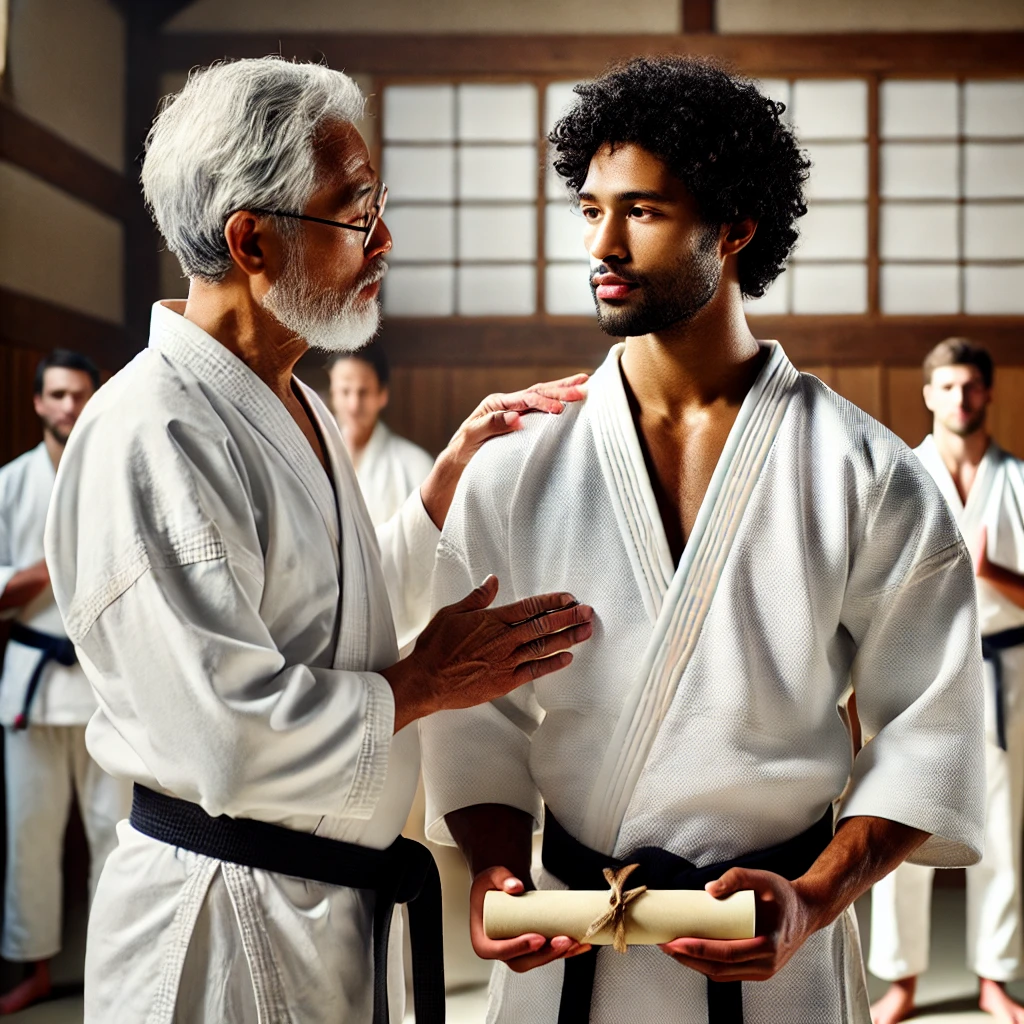Introduction: Understanding Karate Pedigree
Martial arts, particularly traditional karate, place great importance on lineage and legitimacy. A karate pedigree refers to a direct and documented connection between a karate instructor and the historical lineage of their style. This lineage serves as a marker of authenticity, tradition, and knowledge transmission.
However, does an impressive pedigree guarantee superior instruction or effectiveness in real-world application? Or, can an instructor with a solid lineage fail to adapt to modern pedagogical and scientific advancements?
At Seiwakai Karate Silicon Valley (SKSV), we recognize that while pedigree plays a role in maintaining the integrity of Gōjū-Ryū Karate, true effectiveness comes from quality instruction, scientific training methods, and real-world applicability.
Part I: The Importance of Karate Pedigree
1. Lineage as a Preservation Mechanism in Martial Arts
Historical Transmission of Karate Knowledge
Before modern documentation, karate was passed down through direct physical and oral instruction, ensuring that techniques and philosophies were preserved. In pre-modern Japan, the menkyo kaiden (免許皆伝) system formalized mastery of a martial art, similar to Okinawan karate’s student-master transmission model.
Gōjū-Ryū Karate follows a well-documented lineage:
- Higashionna Kanryō (1853–1915): Integrated the existing fighting styles of Okinawan Tōde (唐手) with Southern China (Fujian) martial arts he studied while abroad.
- Miyagi Chōjun (1888–1953): Systematized Gōjū-Ryū, emphasizing hard-soft principles, breath control (ibuki), and hojo undo (補助運動, supplementary training).
- Seiwakai & JKF Gōjūkai: Organizations maintaining high standards of Gōjū-Ryū worldwide (Instructor Credentials).
A documented lineage ensures technical accuracy, but it does not necessarily guarantee effective instruction.
Academic Perspectives on Lineage in Martial Arts
- Bowman P. (2017) argues that martial arts without a structured lineage often experience “drift” or progressive dilution of technical content.
- Channon & Phipps (2021) highlight how structured lineage-based instruction reinforces cultural identity and technical preservation.
- Cynarski (2017) describes traditional martial arts as educational systems, noting that karate lineage preserves philosophy but requires adaptation to modern training standards.
Thus, while lineage serves as an important preservation tool, it must be complemented by modern pedagogical practices.
Part II: Why Pedigree Alone Is Not Enough
2. The Limitations of Lineage-Only Instruction
The “McDojo” Phenomenon
While pedigree ensures authenticity, some instructors fail to teach effectively due to over-reliance on tradition. The “McDojo” phenomenon describes schools that prioritize certifications and titles over practical training, leading to:



Martial Arts Pedagogy: Bridging Tradition and Modern Science
A competent instructor must:



New Academic Insights on Martial Arts Instruction
- “Lineage and Social Analysis in Martial Arts Studies” (Kung Fu Tea, 2015) argues that lineage can create hierarchical barriers that prevent students from questioning ineffective training methods.
- “Cultivating Health in Martial Arts and Combat Sports Pedagogies” (International Journal of Environmental Research and Public Health, 2021) emphasizes that martial arts training must consider both the physiological and psychological well-being of students.
- “The Influence of Martial Arts on the Quality of Life of College Students” (Bellarmine University ScholarWorks, 2019) finds that martial arts provide physical, mental, emotional, and social benefits, reinforcing the need for student-centered teaching rather than strict adherence to lineage-based authority.
These studies suggest that lineage alone is not sufficient—instructors must incorporate modern coaching strategies and real-world application.
Part III: The Effectiveness of Gōjū-Ryū Karate
3. Scientific Analysis of Gōjū-Ryū’s Training Methods
Gōjū-Ryū remains one of the most biomechanically effective traditional karate styles due to its emphasis on core stability, controlled breathing, and body conditioning.
Biomechanics & Training Benefits
- Sanchin Kata Improves Core Stability & Striking Power
- Fritz & Milligan (2021) demonstrate that Sanchin kata’s isometric tension training enhances muscular endurance and balance.
- Controlled Breathing Enhances Power & Endurance
- Traditional Conditioning Enhances Toughness
- Kote kitae (forearm conditioning) and hojo undo (supplementary training) increase a karateka’s resistance to strikes.
Gōjū-Ryū in Self-Defense



Part IV: The Future of Karate Pedigree & Training
4. Bridging Tradition with Modern Science
A traditional martial art must evolve without losing its core principles. Modern instructors must:
- Integrate sports science and biomechanics into training.
- Maintain cultural integrity while improving pedagogy.
- Balance competition with practical self-defense.
At Seiwakai Karate Silicon Valley, we:



Conclusion: Does Karate Pedigree Matter?


At Seiwakai Karate Silicon Valley, we emphasize:



Call to Action: Train with a Certified and Proven Instructor




Your lineage is your foundation—but how you train determines your future.
References
- Cynarski, W. J. (2017). Gdańskie Studia Azji Wschodniej, 12, 7-17.
- Fritz, J., & Milligan, K. (2021). Martial Arts Conditioning Studies, 5(2), 45-59.
- Bowman P. (2017). “The Definition of Martial Arts Studies,”
- Massuça, N., Pinto, R., & Silva, A. (2013). Physiological and perceived exertion responses during karate kata training. Journal of Sports Sciences, 31(15), 1659-1666.

